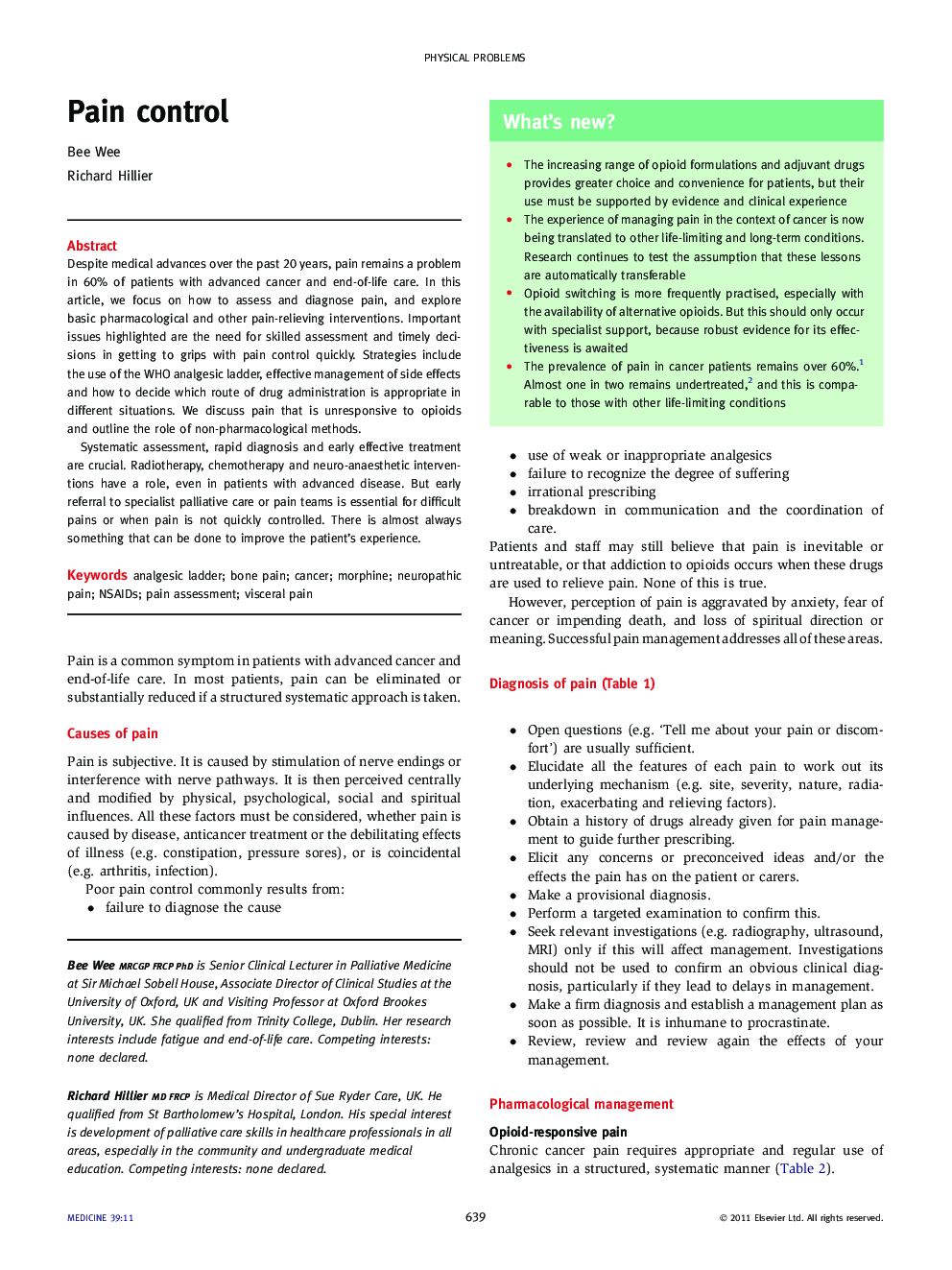| Article ID | Journal | Published Year | Pages | File Type |
|---|---|---|---|---|
| 3806949 | Medicine | 2011 | 6 Pages |
Despite medical advances over the past 20 years, pain remains a problem in 60% of patients with advanced cancer and end-of-life care. In this article, we focus on how to assess and diagnose pain, and explore basic pharmacological and other pain-relieving interventions. Important issues highlighted are the need for skilled assessment and timely decisions in getting to grips with pain control quickly. Strategies include the use of the WHO analgesic ladder, effective management of side effects and how to decide which route of drug administration is appropriate in different situations. We discuss pain that is unresponsive to opioids and outline the role of non-pharmacological methods.Systematic assessment, rapid diagnosis and early effective treatment are crucial. Radiotherapy, chemotherapy and neuro-anaesthetic interventions have a role, even in patients with advanced disease. But early referral to specialist palliative care or pain teams is essential for difficult pains or when pain is not quickly controlled. There is almost always something that can be done to improve the patient’s experience.
